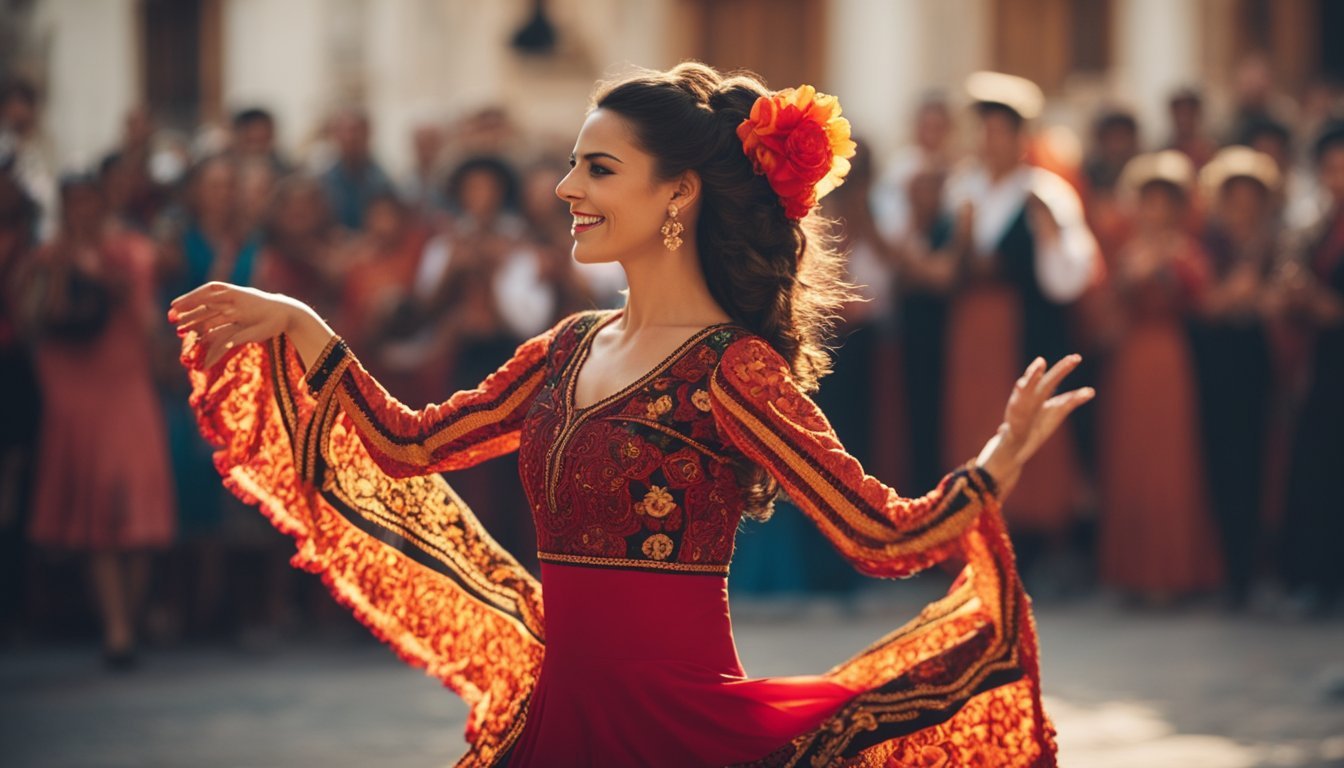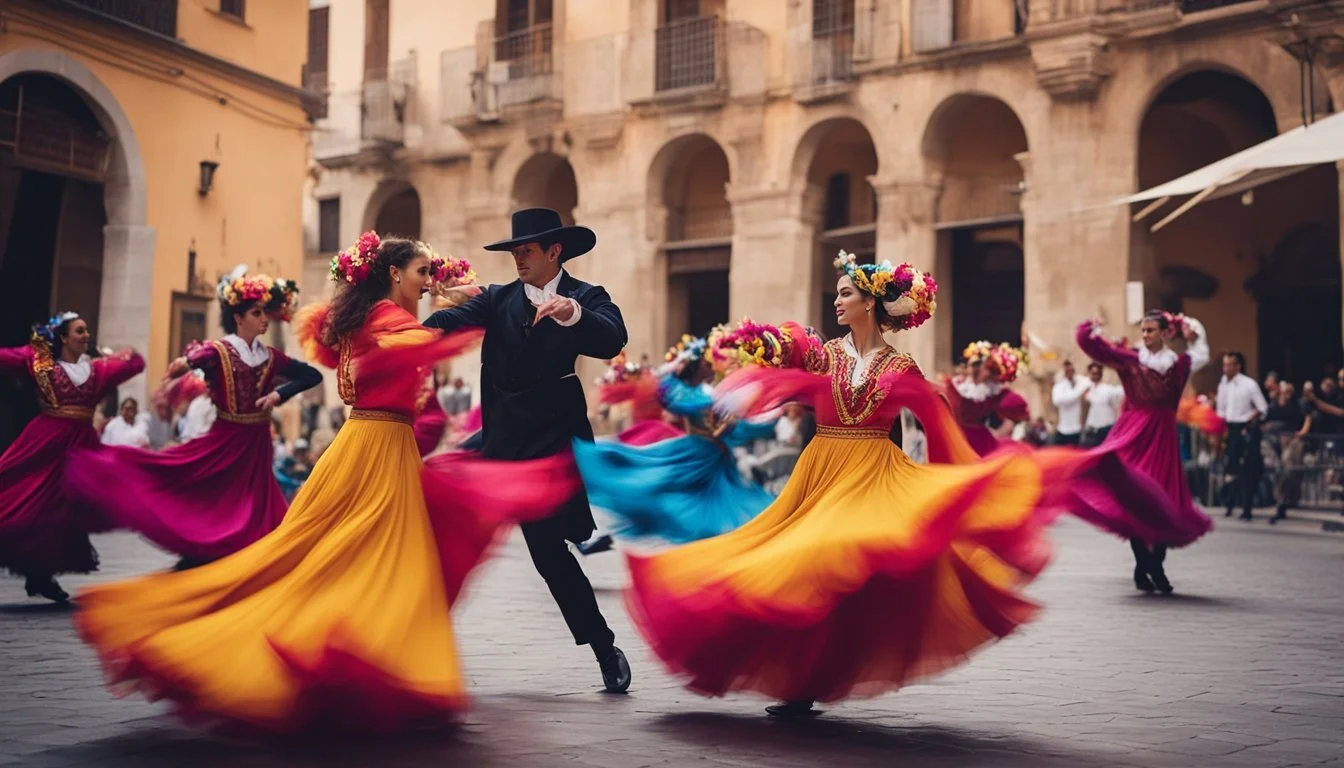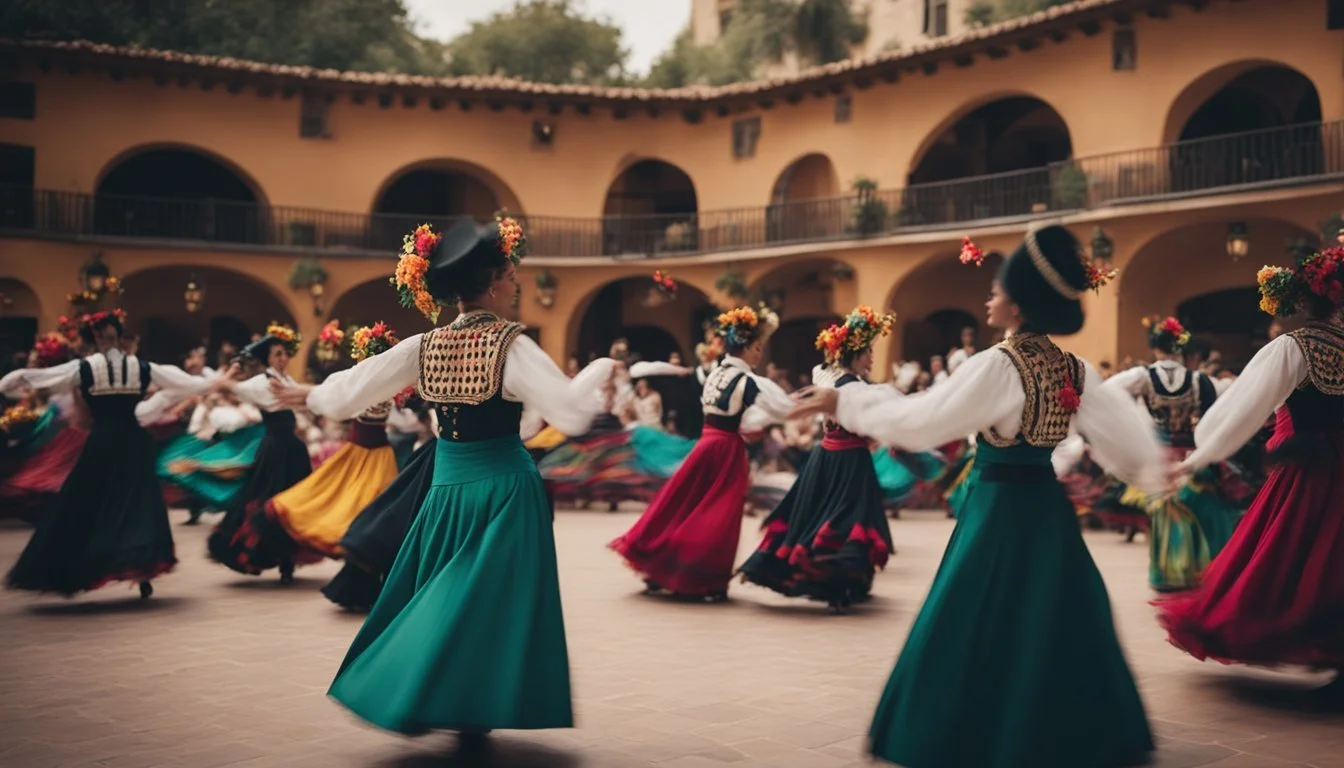Carlos Saura: Capturing the Essence of Spanish Culture and Dance Through Film
Carlos Saura masterfully bridged the worlds of cinema and dance, using his films to explore the rich tapestry of Spanish culture. Known for his emotionally intense and visually captivating movies, Saura brought flamenco and other dance styles into the cinematic limelight, crafting unforgettable films like "Blood Wedding," "Carmen," and "Tango." His unique approach vividly captures the essence of Spain's cultural identity through dance and music, making his work resonate on a global scale.
The Spanish director's career spanned several decades, from the era of Francisco Franco to modern times, showcasing his adaptability and enduring relevance in the film industry. His collaborations with prominent dancers and choreographers, such as Cristina Hoyos and Antonio Gades, resulted in films that were both critically acclaimed and widely influential. Saura’s ability to depict the raw emotion and energy of flamenco helped solidify his status as a pioneer in integrating traditional cultural elements into mainstream cinema.
As Saura's films gained international recognition, they not only highlighted Spanish traditions but also expanded the global understanding of the art forms he so passionately portrayed. Carlos Saura's legacy is a testament to his innovative spirit and profound impact on the way Spanish dance and culture are perceived worldwide.
Early Life and Influences
Carlos Saura was born on January 4, 1932, in Huesca, Spain. His early life in a war-torn country shaped his perspective and his art. Coming from a family with artistic inclinations, his mother was a pianist, and his brother, Antonio Saura, was a well-known avant-garde painter.
His educational journey took him to the Spanish National School of Cinema in Madrid. There, he honed his skills and developed a deep interest in the medium of film.
Saura drew inspiration from Spanish visual culture. He was particularly influenced by Spanish Baroque painting and the works of Francisco Goya. These elements profoundly impacted his later works.
His early exposure to dance and music in Spain also played a significant role in shaping his artistic vision. Flamenco, in particular, became a recurring theme in his films, reflecting his passion for capturing the essence of Spanish culture.
His career began with documentary shorts in 1955, gradually transitioning to feature films. Working during the Francoist regime, his early films often subtly critiqued the political environment in Spain.
Saura was influenced by several filmmakers, notably Luis Buñuel. Their shared interest in surrealism and social critique is evident in Saura's work. He also admired filmmakers from other European nations, further broadening his artistic horizons.
These varied influences combined to create a unique cinematic voice. He was committed to exploring Spanish identity through his films, making him one of Spain's most notable directors.
Signature Style and Themes
Carlos Saura is renowned for his unique interpretation of Spanish dance and culture in film. His work combines the dynamic energy of flamenco, dramatic lighting, and innovative narrative techniques to create immersive cinematic experiences.
Flamenco and Folklore
Saura's films often center around flamenco and other traditional Spanish dances. He collaborates with celebrated dancers like Antonio Gades to bring authenticity to his storytelling. Works such as Blood Wedding, Carmen, and El Amor Brujo showcase flamenco not just as a dance, but as a form of emotional and cultural expression. Saura's dedication to capturing the passion and intensity of flamenco helps international audiences connect with Spanish heritage.
Interplay of Light and Shadow
The use of light and shadow is a hallmark of Saura's visual style. By manipulating lighting, Saura creates a dramatic and often intimate atmosphere that enhances the emotional depth of his films. In Carmen, for instance, the chiaroscuro technique is used to accentuate the tension and passion between characters. This interplay of light and shadow serves not only as a visual treat but also as a narrative device, highlighting internal conflicts and emotional undertones.
Theatrical and Narrative Techniques
Saura's approach often blurs the line between theater and cinema. He employs theatrical elements such as direct choreography within the narrative framework, allowing dance to drive the story forward. In Flamenco, Flamenco, the narrative is secondary to the visual and performative aspects, creating a form of storytelling that prioritizes movement and music. Saura's use of long takes and minimal cuts further immerses the viewer in the performance, making the audience feel like part of the unfolding drama.
Notable Works
Carlos Saura's career is adorned with landmark films that emphasize Spanish culture, dance, and music. His notable works include "Carmen," "Blood Wedding," and "Tango," each illuminating different facets of Spanish art.
Carmen and the Spanish Culture
Saura's adaptation of Carmen integrates elements of flamenco with dramatic storytelling. The film, released in 1983, captures the essence of Spanish culture through its portrayal of passion and betrayal. Carmen stands out for its innovative approach, where actors transition fluidly between on-stage performance and off-stage drama. The narrative is deeply rooted in Spanish folklore, exploring themes of love and vengeance with vivid intensity. The collaboration with flamenco dancer Antonio Gades further enriches the film, making it a cultural touchstone.
Blood Wedding and Dance
In Blood Wedding, Saura merges theatrical dance and film to create a unique storytelling experience. This 1981 film, adapted from Federico García Lorca's play, delves into themes of destiny and forbidden love. Using minimal dialogue, Saura relies heavily on choreographed dance sequences to convey the emotional landscape. The partnership with Antonio Gades is pivotal, as his choreography transforms the narrative into a powerful visual and emotional expression. Blood Wedding elevated the status of dance in film, demonstrating its potential to articulate complex human emotions.
The Importance of Music
Music plays a critical role in Saura’s films, particularly in Tango (1998). This film not only highlights tango culture but also the historical and political backdrop of Argentina. Saura's meticulous selection of musical pieces and their integration into the storyline enhances the narrative's depth. The use of music in his films is not merely for background; it actively participates in storytelling. Saura’s ability to weave music with visual elements creates an immersive experience, allowing audiences to connect with the cultural and emotional layers of the film. His dedication to musical authenticity underscores the importance he places on this medium as a core element of cinematic expression.
Collaborations and Partnerships
Carlos Saura's collaborations with Antonio Gades and Geraldine Chaplin stand out as some of the most significant in his career. These partnerships brought distinct artistic elements to his work, enriching his films with unique talent and vision.
Antonio Gades
Antonio Gades, a legendary flamenco dancer and choreographer, played a crucial role in Saura's Flamenco Trilogy. Their collaborations include Blood Wedding, Carmen, and El amor brujo.
Gades not only starred in these films but also choreographed the dance sequences, infusing them with authentic flamenco spirit. His ability to embody the cultural essence of Spain through dance complemented Saura's directorial style, creating a powerful synergy. This partnership helped elevate the trilogy to iconic status in Spanish cinema.
Geraldine Chaplin
Geraldine Chaplin, an actress of notable pedigree, frequently collaborated with Saura in the 1970s and 1980s. Their professional relationship produced several acclaimed films including Ana and the Wolves and Cría Cuervos.
Chaplin's performances brought depth and complexity to Saura's narratives. Her ability to convey nuanced emotions suited Saura’s exploration of Spanish society and personal identity. This partnership was marked by mutual respect and artistic admiration, contributing significantly to the critical success of their projects.
Impact on Spanish Cinema and Culture
Carlos Saura reshaped Spanish cinema during and after the Franco regime. His films often tackled Spanish history, identity, and society, earning him both national and global acclaim.
International Recognition
Saura's work gained international recognition for its authentic portrayal of Spanish culture and history. Films like Cría Cuervos and Carmen showcased his unique storytelling that resonated globally.
He regularly collaborated with international actors and musicians, expanding his influence beyond Spain. His contributions positioned Spanish cinema on the world stage and underscored the richness of Spanish cultural heritage through film. Awards from Cannes and Berlin cemented his status as a vital figure in global cinema.
Later Works and Evolution
Carlos Saura's later career saw a vibrant exploration of youth and dance. His work frequently intertwined with the flamenco culture of southern Spain. This period highlighted his ability to merge traditional Spanish art forms with contemporary storytelling.
During this phase, Saura created HURRY, HURRY! (1981). This film is notable within the quinqui genre, often featuring real-life teenage delinquents and portraying their descent into a world of drugs and crime.
Saura's Flamenco Trilogy further cemented his legacy. The trilogy comprises:
Bodas de Sangre (1981)
Carmen (1983)
El amor brujo (1986)
These films are collaborations with the famed dancer Antonio Gades. Each film presents distinct narratives rooted in Spanish culture, underscoring the emotional depth and intensity of flamenco.
El amor brujo in particular revisits flamenco's traditional roots. Saura's opening flourish creates a stylistic connection with his earlier works in the trilogy, enhancing his thematic continuity.
Saura's work continued to evoke Spanish identity until his passing on February 10, 2023. His commitment to his craft remained steadfast, releasing new content that consistently resonated with audiences.
His later works reflect an enduring dedication to capturing Spanish culture. Through innovative storytelling and collaboration with artists like Gades, Saura's evolution as a filmmaker is marked by a profound representation of Spanish tradition and modernity.
Personal Philosophy and Interviews
Carlos Saura's approach to filmmaking reflects a deep fusion of personal philosophy and artistic vision. He consistently emphasized the importance of culture as a medium to explore human emotions.
One of his recurring themes was the use of dance and music to transcend linguistic barriers, creating a universal narrative.
In various interviews, Saura often described his process as "intuitive and organic". He believed in the emotional pull of scenes rather than a rigid script, allowing actors to contribute to the film's authentic feel.
Saura articulated that his films serve as "cultural dialogues". Through his works, he aimed to preserve and innovate Spanish traditions, especially flamenco.
Known for being garrulous, his interview style was a blend of personal anecdotes and profound reflections. His candidness provided insights into his creative ethos and lifetime experiences.
During discussions, he frequently credited collaborators like Antonio Gades, acknowledging their role in shaping his films' artistic quality. This collaborative spirit extended to his personal life, where he often drew inspiration from his relationships and familial ties.
Saura's love for authenticity in storytelling shines through his open and uncompromising discourse in interviews. He never shied away from critiquing sociopolitical contexts, often weaving these themes subtly into his narratives.
Critical Reception and Legacy
Carlos Saura stands as one of Spain's most acclaimed filmmakers, particularly noted for his contributions to Spanish cinema during and after Franco's dictatorship. His works often combined social and political commentary, instincts honed during the oppressive regime, with a keen eye for storytelling.
His Flamenco Trilogy—Blood Wedding, Carmen, and El amor brujo—received significant acclaim. These films melded traditional dance with narrative cinema, pushing the boundaries of both genres.
During his career, Saura's films earned numerous awards. The Hunt (1966) won the Silver Bear for Best Director at the Berlin International Film Festival. Ay, Carmela! (1990) collected 13 Goya Awards, including Best Film and Best Director.
Critics have highlighted Saura's ability to capture the essence of Spanish culture and identity. His work resonated not only in Spain but worldwide, showcasing the complexities and richness of his homeland.
Saura's influence extended beyond cinema. His dedication to integrating music and dance into his movies shaped modern perceptions of these art forms. He collaborated with well-known figures like flamenco dancer Antonio Gades, further solidifying his legacy.
His films remain a touchstone in Spanish cinematic history. Saura managed to navigate and thrive in a politically charged era, leaving an indelible mark on the film industry.
Carlos Saura's passing in 2023 marked the end of an era for Spanish cinema. His body of work continues to be studied and celebrated, a testament to his enduring impact on the cultural landscape.
Influence on Contemporary Filmmakers and Dancers
Carlos Saura's innovative blend of film and dance has left an indelible mark on modern cinema and dance. His works like "Blood Wedding," "Carmen," and "Tango" are celebrated for their deep cultural resonance and artistic sophistication.
Many contemporary filmmakers cite Saura’s intricate choreography and vivid storytelling as significant influences. His ability to integrate dance into the narrative structure has inspired directors to explore more expressive and dynamic forms.
In dance, his collaboration with choreographers like Antonio Gades and Cristina Hoyos highlighted the emotive power of dance. This partnership showcased how movement can convey complex emotions and narrative arcs, encouraging dancers to push the boundaries of traditional forms.
Saura’s Flamenco Trilogy is particularly influential. Its innovative use of color, music, and dance sequences created a template for combining visual art with performing arts. Contemporary directors and choreographers often reference these techniques in their work.
Key Influences Examples Integration of Choreography Blood Wedding, Carmen, Tango Visual and Musical Symbolism Flamenco Trilogy Collaborative Techniques Works with Antonio Gades, Cristina Hoyos
The reach of Saura's influence extends beyond Spain. Filmmakers and dancers globally continually draw inspiration from his methods, recognizing his pivotal role in elevating dance within cinematic contexts. His artistic legacy endures in the evolving fields of film and dance.









